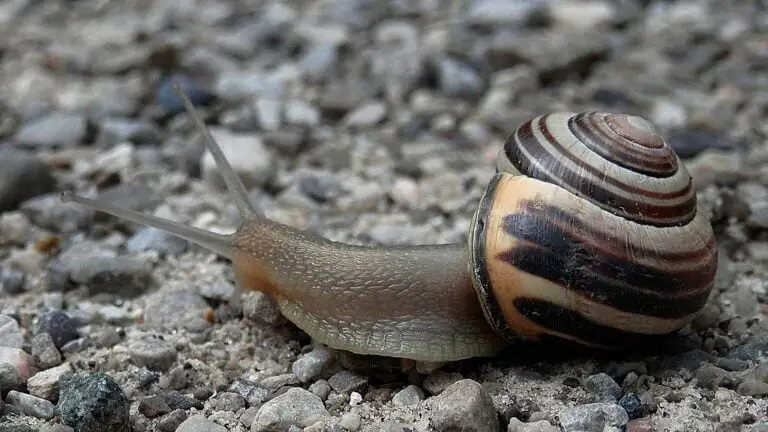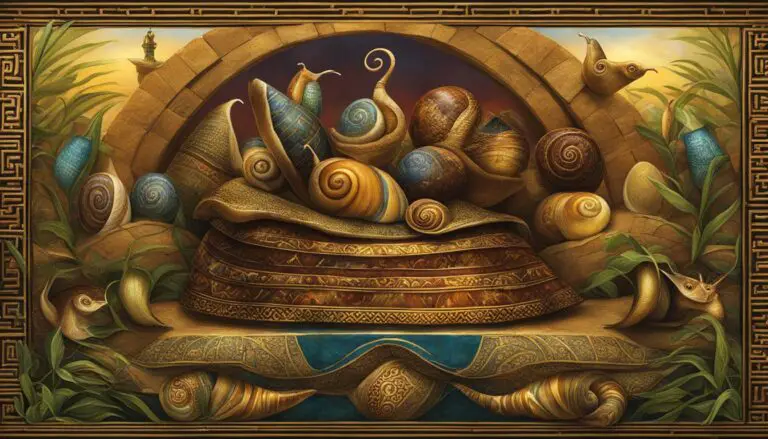Snail Spiritual Meaning: An Exploration of Its Symbolic Significance
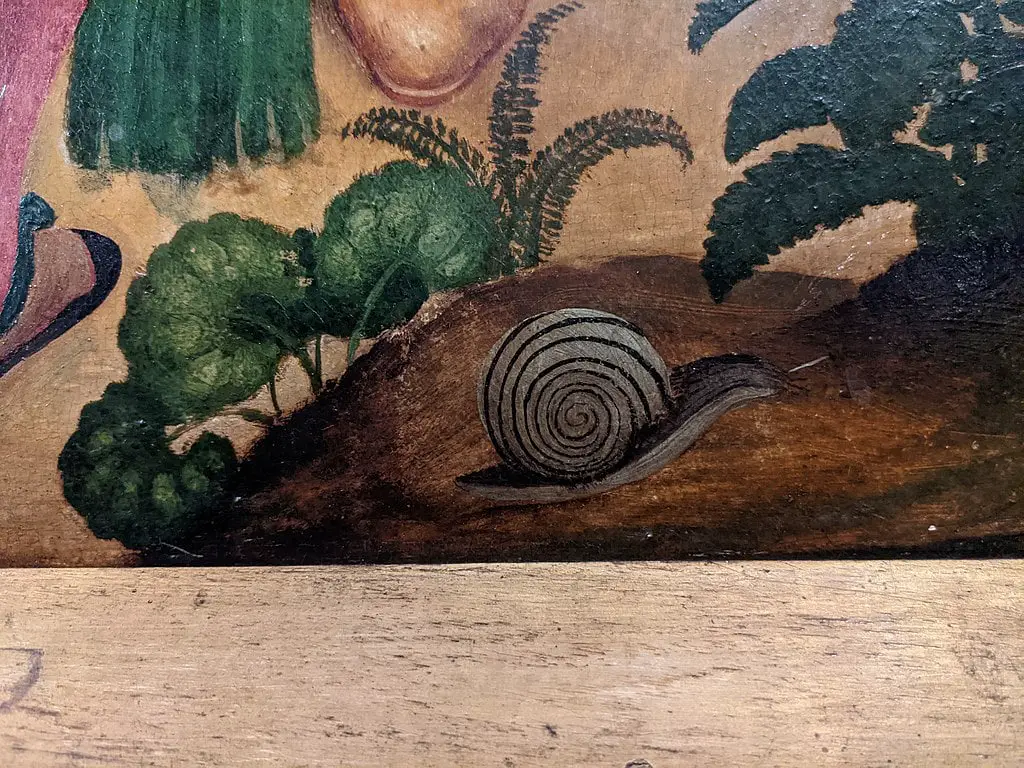
Have you ever paused to ponder the humble snail, leisurely making its way across your garden path or your aquarium glass? It’s an animal that many of us encounter frequently, yet know little about – especially when it comes to what these creatures might symbolize in different cultures and contexts around the world.
If snails could talk, what tales would they tell? From Greek mythology to modern popular culture, snails have wound their way into a surprising number of symbolic narratives and meanings. These interpretations can provide fascinating insights into how different societies perceive the world, and the lessons they take from nature.
Join us as we unveil the secrets and hidden messages behind snails’ symbolism. We’ll explore how snails have been viewed as symbols of transformation, patience, and perseverance. We will also dive into the significance of snails in dreams, art, literature, and even psychology. Each section provides a glimpse into these various topics, serving as an overview and offering links to more detailed articles for a deeper understanding. By the end of this article, you’ll have a fresh perspective on these fascinating creatures and their spiritual significance. Let’s begin!
Snail as a Symbol of Personal Growth and Resilience
Snails are frequently seen as emblems of personal growth and resilience due to their distinctive characteristics. Most notably, their ability to carry their homes on their backs, which suggests adaptability, particularly during challenging periods or significant transitions in life.
Contrary to popular belief, snails don’t shed their shells and grow new ones; they continuously grow and add to their existing shell throughout their life. This misinterpretation, however, has inspired the metaphorical idea of humans shedding old habits and adopting new ones, aligning with themes of personal development and transformation.
The snail’s measured pace further emphasizes the virtues of patience and perseverance. In a world that often values instant gratification, the snail is a symbol of the rewards that come from a steady, methodical approach to self-improvement.
The Snail’s Shell as a Symbol of Self-Protection
The snail’s shell serves more than a symbol of transformation; it is also recognized as a symbol of protection.
When threatened, snails retreat into their shells, creating a safe haven. This behavior is seen as a metaphorical reminder to prioritize self-care and safeguard oneself during tough times.
Symbolism Interpretation Personal Growth and Adaptability The continuous growth of the snail’s shell symbolizes personal development and adaptability. Patience and Perseverance The snail’s measured pace symbolizes the importance of patience and perseverance in personal growth. Self-Protection The snail’s shell serves as a reminder to prioritize self-care and protect ourselves during challenging times.
Snails and the Virtue of Patience
The snail, celebrated for its measured pace and deliberate movements, is frequently associated with patience. This unhurried creature, seemingly unhurried by the bustling world, operates at its own rhythm, offering a stark contrast to our often frenetic modern lives.
The snail’s embodiment of patience is a virtue many of us find challenging in our fast-paced, deadline-driven society. We frequently focus on swiftly attaining our objectives, losing sight of the value of the journey in our rush towards the destination. Yet, the humble snail serves as a gentle reminder of the importance of appreciating the process. By taking our time and moving with purpose, we can savor the beauty that surrounds us and derive joy from the path to our goals, rather than just the attainment.
Moreover, the snail’s consistent, steady progress is a testament to the power of perseverance. Despite their modest size and delicate appearance, snails are surprisingly resilient, able to endure harsh weather and traverse challenging terrains. Their behavior teaches us a valuable lesson: persistence in the face of adversity is key to overcoming obstacles and achieving our ambitions.

Interpreting Snails in Psychology
While snails might not seem like a common symbol within the field of psychology, their unique characteristics can serve as metaphors for different aspects of human personality and behavior. It’s worth noting, however, that such interpretations are not standardized, and can vary greatly depending on personal and cultural contexts, as well as specific therapeutic approaches.
Often, the introspective nature of snails, who retreat into their shells for safety, can be seen as representative of introverted personalities who likewise find comfort in solitude and familiar environments. The snail’s cautious movement might symbolize careful deliberation and sensitivity, mirroring individuals who are deeply affected by their surroundings.
Dream interpretation, a psychological practice with roots in psychoanalysis, may see the appearance of a snail as indicative of feelings of vulnerability or a need for protection. The trail a snail leaves behind, despite its slow progress, can also be seen as a metaphor for leaving an impact or a legacy, encouraging individuals to recognize the value in even small or slow progress.
While intriguing, these interpretations are not universally recognized in psychology, and should be seen as potential symbolic associations rather than definitive psychological principles. The symbolism of snails, like many other symbols in psychology, can be a prompt for introspection, fostering a deeper understanding and appreciation of our individual traits and behaviors.
Snail Symbolism in Judaism: A Sacred Shade
In the vast tapestry of snail significance, there’s a hue that stands out, not just in its vibrancy but also in its spiritual value. This color, known as Tekhelet, is a shade of blue that holds a special place in Jewish tradition. Although the source of the dye is not disclosed in the Bible, according to rabbinical writings it was derived from a sea creture called Hilazon, which in modern Hebrew means snail. This dye was used in the garments of the High Priest and the tapestries of the Tabernacle.
The lore surrounding Tekhelet is as deep as its color; it’s said that the snail from which it is derived surfaces only once every 70 years. However, modern Jewish scholars believe they have identified the specific snail, and the color is now manufactured from the Hexaplex trunculus snail, and it can be seen adorning the fringes of the tallit, a four-cornered garment worn by many Jews, all over the world.
While the exact source of Tekhelet and its production method remains a topic of debate and mystery, its significance is undoubted.

The Symbolic Interpretation of Snails in Dreams
It’s not rare to encounter a snail or two in our dreams. For some, these might be dismissed as simple, trivial details. For others, though, they believe that these slow-paced creatures that grace their dreams can convey substantial insights and messages. Let’s explore some interpretations:
Steady, Determined Progress: Snails aren’t exactly sprinters. They take their time, moving slowly but unceasingly towards their goal. If a snail shows up in your dream, it might be mirroring your own approach to achieving your goals—slow, steady, and unyielding. Or it could be a gentle reminder to stay resilient, adaptable, and patient in the face of change.
Endurance and Adaptability: Snails carry their homes on their backs. This unique lifestyle makes them models of adaptability and endurance. When you see a snail in your dream, it could symbolize your ability to adjust to life’s unpredictable changes, find comfort in your personal space, or rely on your internal resources.
However, it’s crucial to remember that dream interpretation isn’t an exact science. The meaning of snails in your dreams can shift based on the specific context of the dream, your personal experiences with snails, and the emotions you felt during the dream.
The Meaning of Snails in Tattoo Art
While snails might not be the first creature that springs to mind when planning a tattoo, they carry a unique symbolism that appeals to a niche audience. As with any form of body art, the symbolism is highly personal, subjective, and varies significantly from person to person. Here, we explore some common interpretations of snails in tattoo art, bearing in mind that these meanings are not universal.
For some tattoo enthusiasts, snails represent patience and perseverance, qualities mirrored in the creature’s slow yet steady progress. The trait of carrying its home on its back appeals to those who value adaptability and the ability to find a sense of home and security, no matter where they might find themselves.
Popular Snail Tattoo Designs & Potential Meanings:
- Realistic snail: May symbolize patience, slow progress, and self-discovery.
- Snail with a shell house: Could represent adaptability and the ability to carry one’s home wherever they go.
- Snail trail: Often signifies a personal journey or growth process. It might also represent the idea of leaving a mark or forging a path in life, however small or slow the progress might seem.
These interpretations are merely potential meanings, and the actual significance of a snail tattoo can only be definitively interpreted by the individual who chooses the design. As one tattoo enthusiast explains, “The snail is a symbol of slow progress, and that’s sometimes a good thing, so I use it as a reminder to slow down and be patient.”
When considering a snail tattoo, it’s essential to choose a design that resonates with you personally. Collaborate with a reputable artist to bring your vision to life, ensuring that the final product accurately reflects your intended symbolism. Always remember that these interpretations are not exhaustive or universal, so it’s advisable to conduct your own research and delve into personal introspection when deciding on your tattoo’s design and symbolism.
The Meaning of Snails in Modern Popular Culture
Modern popular culture often embraces the snail as a symbol of slow and steady progress, a trait emphasized in children’s stories, cartoons, and movies.
Snails are prevalent in animated films and series, like DreamWorks’ “Turbo,” where the central character is a garden snail dreaming of speed. This story flips the conventional symbolism of the snail, demonstrating that even those considered slow and small can achieve great things with determination and perseverance.
Snails also feature in video games. The Pokémon franchise, for instance, includes snail-like creatures such as Magcargo and Gastrodon, characters that embody resilience and tenacity.
In the realm of literature, young readers might encounter snails in Brian Jacques’ “Redwall” series, where they’re presented as methodical, patient, and often wise characters. Adult literature too, such as Haruki Murakami’s novel “Kafka on the Shore,” includes metaphorical references to snails, symbolizing introspection and the passage of time.
Finally, in the world of memes and internet culture, snails have not been left behind. They often represent patience, introversion, and the joy of slow living in a fast-paced digital age.
These interpretations of snail symbolism in modern popular culture underscore the creature’s universal appeal and timeless relevance. From children’s cartoons to complex novels, the humble snail continues to carry important symbolic messages, reminding us of the value of patience, resilience, and the beauty of the slower path.
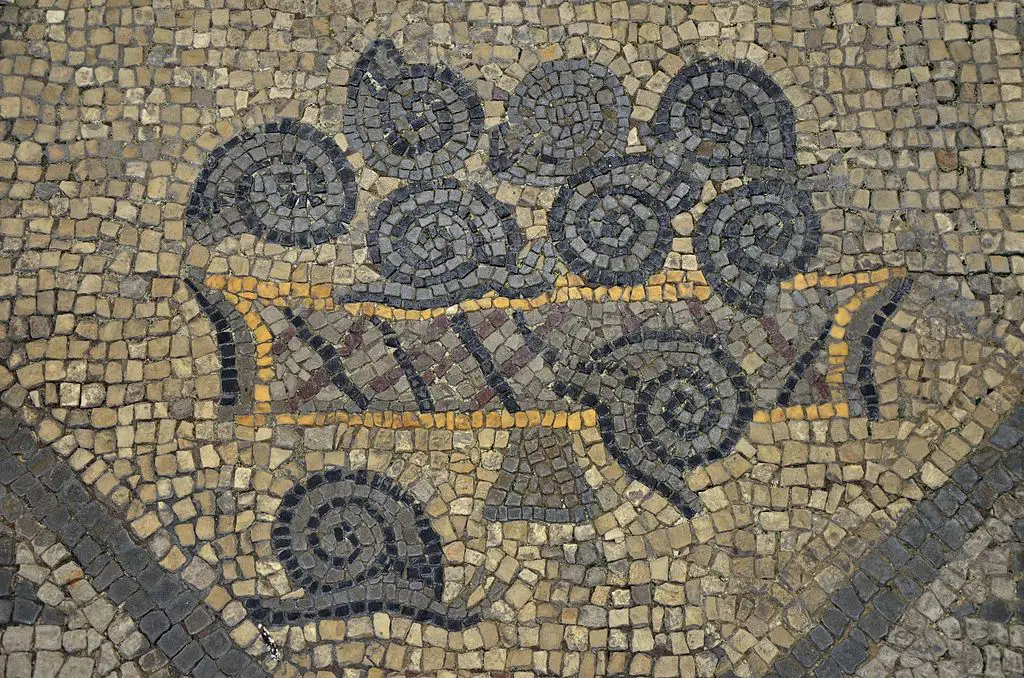
Snail Symbolism in Greek Mythology
In the rich tapestry of Greek mythology, snails weave their own unique story. They’re often linked to the god Hermes, known for his swift travel and keen intellect. Some interpretations suggest that the snail’s slow but determined movement may be seen as a reminder to take our time, even when facing obstacles or pursuing our goals, reflecting Hermes’ wisdom and patience.
There’s also a fascinating connection between snails and the goddess Aphrodite, famed for her associations with love and fertility. Given that snails are hermaphroditic, carrying both male and female reproductive organs, they could symbolize a unique aspect of fertility and creation.
As for the god Apollo, while his ties to snails aren’t as prominent, we can draw interesting parallels. Apollo, the god of music, might appreciate the delicate structure of a snail shell, which can resemble a spiraled musical instrument, like a horn. Just as the sound of a horn can carry over great distances, so does the influence of snails span across many cultures and symbolisms.
Remember, these interpretations are not set in stone; they are subject to various interpretations, perspectives, and debates among scholars. Still, they provide an interesting glimpse into the symbolic value that ancient cultures may have placed on this humble creature.
The Significance of Snails in Native American Culture
Snails hold a special place in Native American culture, representing a variety of important values and beliefs. Many tribes believe that snails are symbols of humility, patience, and reverence for the natural world.
According to some Native American creation stories, snails were among the first creatures to be created by the Great Spirit, making them symbols of creation and the cycle of life. In other stories, snails are associated with healing and medicine, as their slow and steady pace is seen as a metaphor for the gradual healing of the body and soul.
The Symbolic Connection between Snails and the Earth
Snails are also connected to the earth in Native American culture. Many tribes believe that snails are guardians of the earth, and that their slow movements help to keep the soil in balance. Snails are therefore seen as symbols of environmental awareness and responsibility, reminding us to treat the earth with care and respect.
Some Native American tribes also associate snails with fertility and abundance. The spiral shape of a snail’s shell is reminiscent of the cycles of growth and renewal in the natural world, and snails are therefore seen as symbols of prosperity and good fortune.
The Role of Snails in Native American Art and Storytelling
Snails have long been a popular subject in Native American art, appearing in a variety of forms including pottery, baskets, and jewelry. Snail motifs are often used to symbolize the various meanings discussed above, as well as to represent the importance of patience, perseverance, and adaptability.
Snails also feature prominently in Native American storytelling, where they are often used to teach important moral lessons. For example, in some stories, snails are admired for their tenacity and ability to persevere despite their slow pace. These stories remind us that success is not always about speed, and that persistence and determination are just as important as raw talent.
Overall, snails play an important role in Native American culture, representing a variety of values and beliefs that are still relevant today. Through their connection to the earth, their reminders of patience and perseverance, and their associations with prosperity and healing, snails continue to inspire and guide us on our journeys through life.
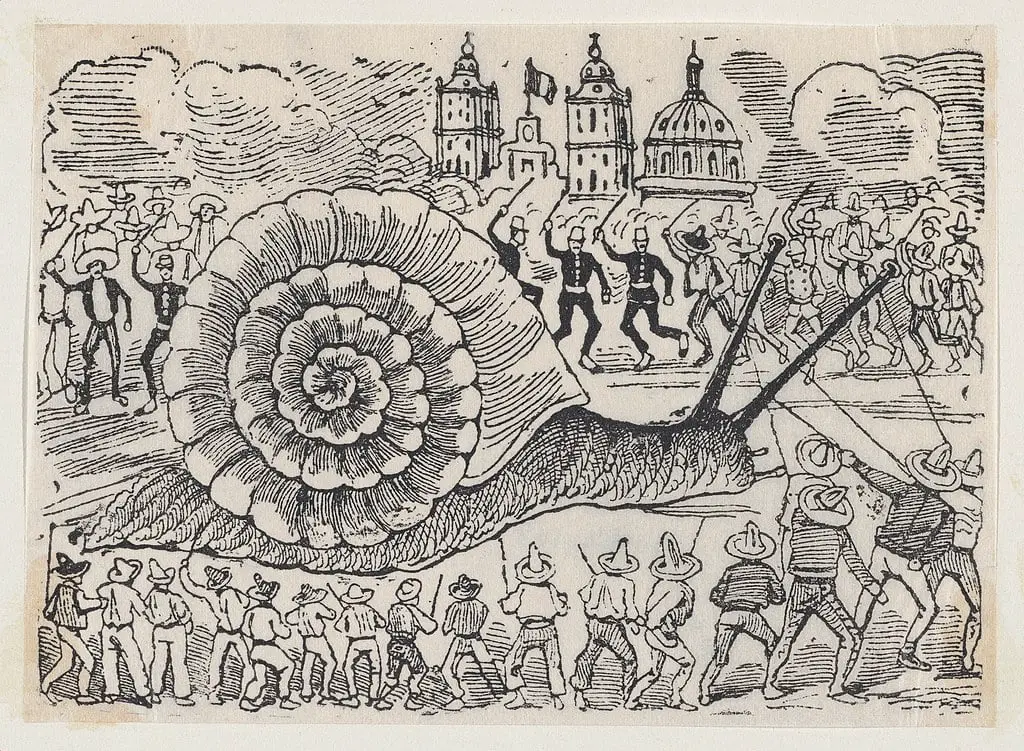
Snail Symbolism in Christianity
Unlike many other cultures and religions, snails do not have a clear-cut symbolic significance within mainstream Christianity. Their mention in the Bible is sparse and they do not feature prominently in traditional Christian iconography. However, they are mentioned in a few contexts, such as in Leviticus 11:30, where they are listed among the ‘unclean’ creatures, and in Psalm 58:8, where they metaphorically represent a state of decay. These instances likely offer more context about the life and laws of ancient times rather than deep symbolic interpretations of the snail.
Beyond these biblical mentions, the unique aspects of a snail’s nature have led to some intriguing interpretations by individuals who see spiritual metaphors in the natural world. For example, the snail’s spiral shell can be seen as a symbol of resurrection and spiritual growth, reflecting the Christian journey of moving towards a greater spiritual awakening, much like the expanding spiral of a snail’s shell.
Furthermore, a snail’s ability to retreat into its shell has occasionally been likened to Christian practices of spiritual retreat and introspection. This mirrors the Christian tradition of withdrawal for prayer and contemplation, often used as a means of fostering a closer relationship with God.
While these interpretations provide a fascinating glimpse into the possible connections between the humble snail and Christian practices, they are not universally accepted or recognized across all Christian denominations. Symbolism can vary greatly depending on cultural context and individual perspective, and this holds true for the interpretation of snails within a Christian context.
It’s essential to consider the individual belief system and cultural context when interpreting symbols in a religious setting. As such, the symbolic meaning of the snail in Christianity may not be the same for everyone, adding to the depth and diversity of this intriguing creature’s symbolic repertoire.
Snail Symbolism in Art and Literature
Throughout history, snails have been depicted in various forms of art and literature, often carrying symbolic meaning. Let’s explore some notable works featuring snail symbolism:
Snail Symbolism in Literature
Across centuries, snails have found their way into various forms of literature, carrying symbolic meanings with them. Their slow, methodical movement and unique physical characteristics have made them a subject of intrigue, used to convey deep and profound messages.
In Aesop’s famous fable, “The Tortoise and the Hare,” the core message is one often associated with snails: slow and steady wins the race. The tale embodies the patience and determination that snails represent.
Renowned American poet Robert Frost referred to a snail in his poem “A Time to Talk.” In this context, the creature symbolizes the need to pause and value human connection. This mirrors the common association of snails with slowness and mindfulness.
In her memoir The Sound of a Wild Snail Eating, Elisabeth Tova Bailey explores the symbolism and significance of a snail that takes up residence on her bedside table during a period of illness. The snail becomes a source of comfort and companionship, representing the beauty and resilience of the natural world.
Snail Symbolism in Art
Snails, and particularly their unique spiral shells, have frequently been featured in visual arts. They symbolize the cycles of nature, evolution, and the journey of life.
Surrealistic painter Salvador Dalí often incorporated snails into his works. After seeing a snail on a bicycle outside Freud’s house, Dalí was inspired to use snails as a motif. The snail shell’s logarithmic spiral symbolized perfection and harmony to Dalí. For instance, you can spot a snail on the coastline in his painting “The Persistence of Memory.”
In contemporary art, modern artists employ the symbol of the snail to evoke feelings of slow-paced contemplation and harmony with nature. An example is “The Snail,” a collage by Henri Matisse, created from large pieces of brightly colored paper. This piece is said to represent the slow but sure process of creating art.
Through literature and art, snails serve as compelling symbols of universal truths, teaching us the values of patience, the importance of slow, deliberate action, and the beauty inherent in nature’s forms.
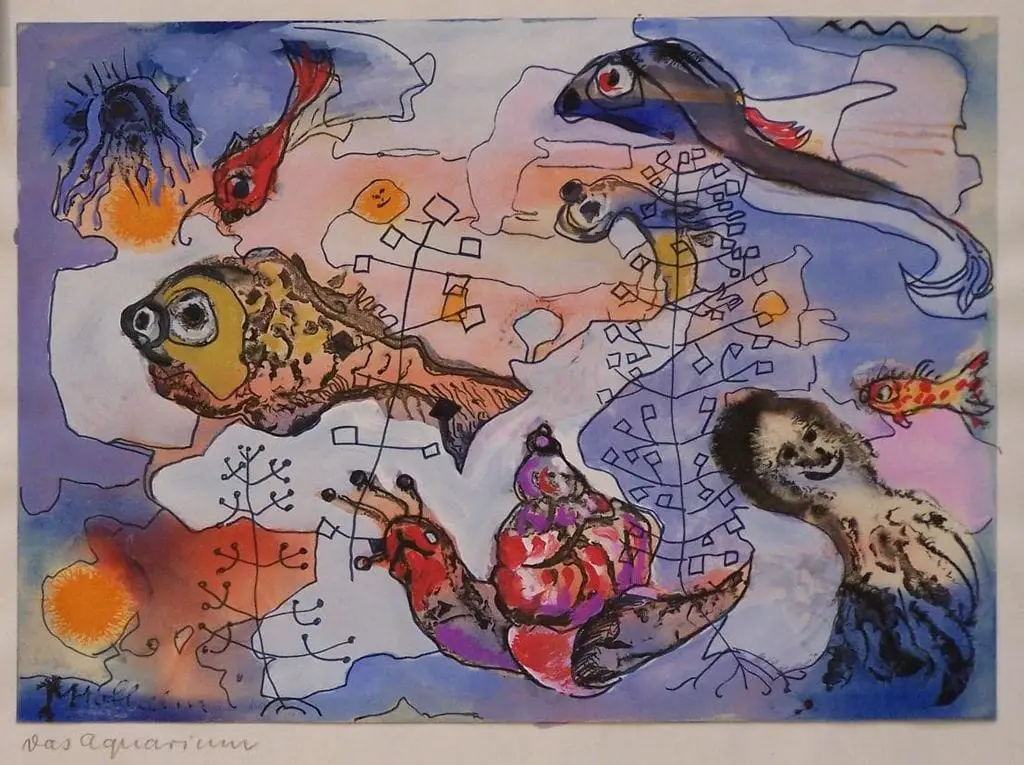
Snail Symbolism in Medieval Marginalia
In the margins of English texts from the 13th and 14th centuries, an intriguing scene frequently appears: a knight, often depicted with a look of surprise or concern, engaged in combat with a snail. The frequency of these illustrations in medieval manuscripts is surprising, given the seeming disparity in power between a knight and a snail. An article from the Smithsonian Magazine explores this phenomenon in detail.
Historians and scholars have proposed a range of theories to interpret these unusual images. Some suggest that the scenes may represent the Resurrection, while others propose that the snail is a stand-in for the Lombards, a group criticized during the early Middle Ages for usury and unchivalrous behavior.
In another interpretation, these snail-and-knight battles are seen as a form of medieval humor, the absurdity of the scene inviting readers to laugh at a knight seemingly scared to attack a slow-moving snail. Alternatively, these scenes could be a memento mori, a reminder of the inevitability of death, linking to a verse from Psalm 58 of the Bible: “Like a snail that melteth away into slime, they shall be taken away; like a dead-born child, they shall not see the sun.”
The true meaning of these curious snail-and-knight scenes may forever remain a mystery. Still, their persistent appearance in medieval marginalia demonstrates the snail’s intriguing role as a symbol in historical literature and art.”
Frequently Asked Questions about Snail Symbolism
As we’ve explored in this article, snails hold a significant place in many cultures, religions, and practices. Here are some common questions about snail symbolism:
What does it mean to dream of a snail?
Dreams about snails can have several interpretations, depending on the context and other details in the dream. In general, seeing a snail in a dream can represent slow but steady progress or a need to slow down and be patient. Alternatively, it can symbolize a feeling of vulnerability or sluggishness.
What do snails represent in Native American culture?
In many Native American cultures, snails are respected for their ability to navigate both land and water. They are often associated with the idea of adaptability and flexibility, representing the importance of being able to adjust to changing circumstances and environments.
What is the symbolic meaning of a snail’s shell?
The snail’s shell is a powerful symbol of protection and home. As the snail carries its home on its back, it represents the idea of self-sufficiency and self-protection. Additionally, the spiral shape of the shell can be seen as a symbol of growth and evolution.
Can snails be a symbol of transformation?
Yes, snails can represent transformation and change, particularly because of their slow but steady progress. The snail’s ability to carry its home on its back can also symbolize the idea of personal growth and self-sufficiency.
Why are snails used in marginalia in medieval manuscripts?
The illustrations of knights battling snails in the margins of medieval manuscripts are a curious feature of English texts from the 13th and 14th centuries. While the exact meaning of these scenes is uncertain, they could represent the Resurrection, the Lombards, a form of medieval humor, or a memento mori. The frequency of these illustrations demonstrates the snail’s intriguing role as a symbol in historical literature and art
How do snails appear in the Bible?
The Bible contains two references to snails. In Psalm 58:8, snails are referred to in the context of a curse or punishment. In Leviticus 11:30, some English translations mention snails as an unclean animal, but the original Hebrew term can refer to various types of creatures and isn’t specific to snails.
What does a snail symbolize in Christianity?
While the symbolic significance of snails in mainstream Christianity isn’t clear-cut, some interpretations exist. The snail’s spiral shell, for instance, can symbolize resurrection and spiritual growth. A snail’s ability to retreat into its shell has been likened to Christian practices of spiritual retreat and introspection.
What does a snail represent in popular culture?
In modern popular culture, snails often represent slowness or laziness. They frequently appear as adorable, slow-paced characters in children’s stories, cartoons, and films. However, they can also symbolize perseverance and the ability to carry one’s home wherever one goes, as seen in the animated film “Turbo” and the video game “Snail Bob”.
Are snails a symbol of patience?
Yes, snails are often used as a symbol of patience because of their slow and steady pace. Observing snails in nature can remind us of the importance of taking our time and being patient in various aspects of our lives.
What do snails represent in tattoo art?
Snails can be a popular tattoo design, often representing the idea of slow but steady progress or personal growth and transformation. The snail’s shell can also be incorporated into tattoo designs as a symbol of protection and home.
These are just a few of the questions and interpretations regarding snail symbolism. Ultimately, the meanings and interpretations of snails are subjective, and can vary depending on the culture, religion, or individual perspective.
Snail Symbolism: An Overview and Final Thoughts
“And that’s a wrap! From Greek mythology to pop culture, we’ve ventured through the world of snail symbolism, unraveling the meanings and associations this humble creature carries. Whether they’re teaching us patience, encouraging personal growth, or reminding us of the power of resilience, snails have much more to offer than what first meets the eye.
Stay tuned for more in-depth exploration of each of these symbols in our upcoming posts. Till then, why not take a leaf from the snail’s book? Slow down, enjoy the journey, and remember – it’s not always about the pace, but the direction!




